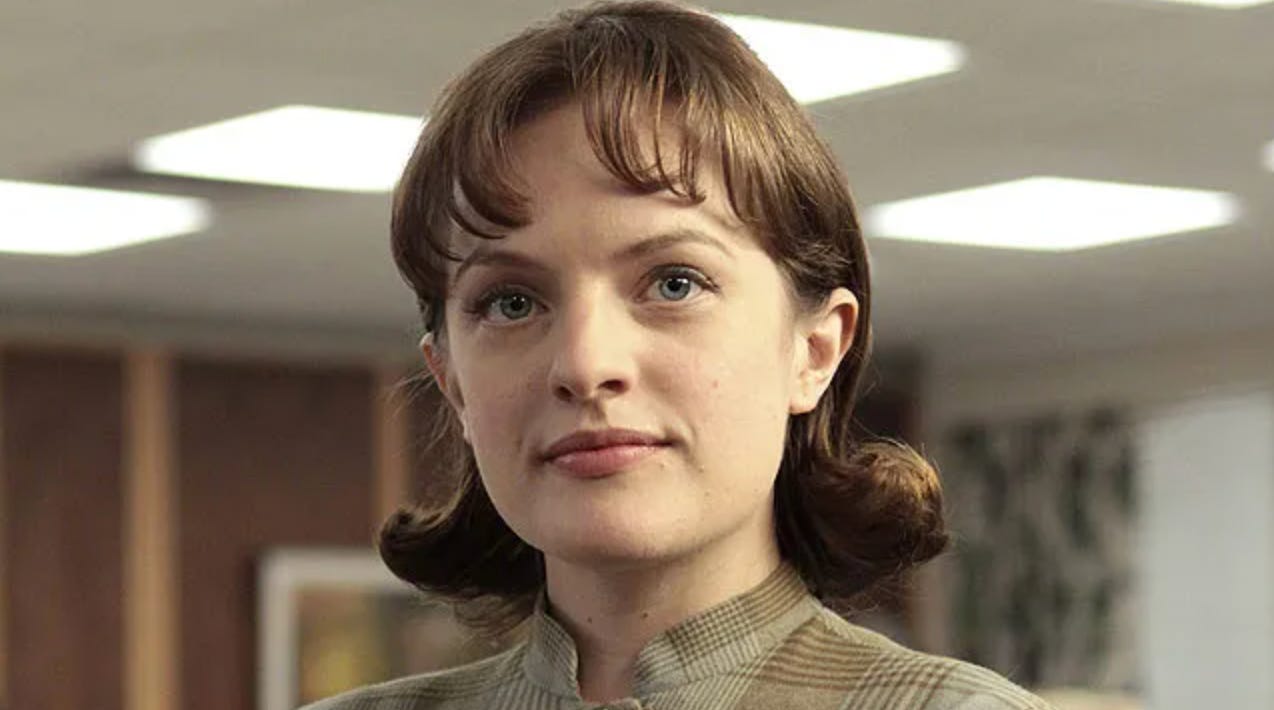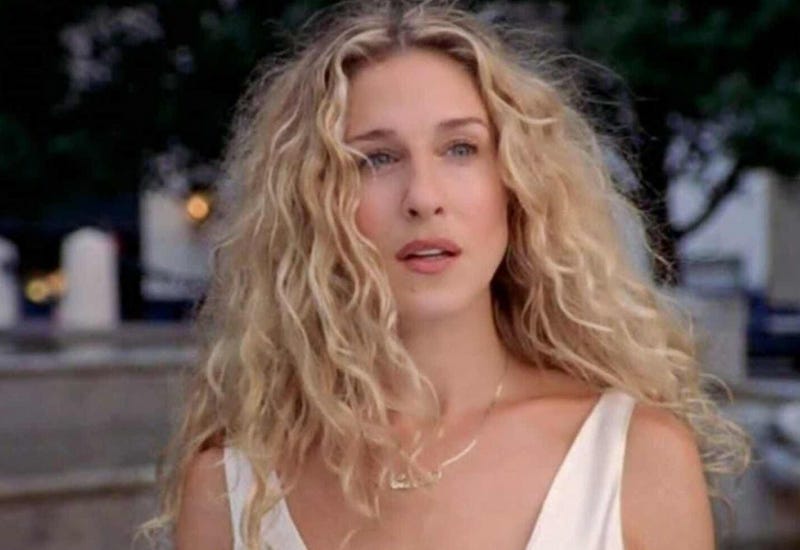The writers of Substack are OBSESSED with Carrie Bradshaw.
She is you writing for your three subscribers.
You are her writing your dissertation on the downfall of Doen.
She is you swearing off men after your Big broke your heart.
I LIKE Sex & the City. Do I have the fanatical obsession with it that this app has? No. Did I watch all 6 seasons back-to-back while on a two-week trip to Istanbul with the Turkish German, Berlin-based family I used to nanny for? Yes.
It was Ramadan in 2010, and I was mostly hangry during the daytime waiting for sundown. I grew up Christian and Southern though, so knew to do two things while there— one, pray over any food I was offered, and two— not to disrespect people (ever), but especially not in their home during a holy month. My employer, Seyran, sensed my misery and kindly gave me a mostly free pass to lay around while Zoe, the five-year-old-going-on-fifteen little mama I was supposed to be supervising, accosted her older cousins. #Bless.
While my stomach begged for sustenance, I took trips up and down the island of Manhattan with the girls of Carrie Bradshaw’s NYC. My sister discovered SATC many years after its final episode aired. During a weekend trip to visit, she remarked that you could never make a show like Sex & the City today, and she was right.
For starters, there were no cell phones. Some of the dialogue is questionable– albeit funny. There was no social media. More than half of the kerfuffles Carrie and friends find themselves in during seasons 1-6 could have been solved via a simple text or stalking session on IG. Weirdly enough there were also no black or brown people that weren’t comic relief or supporting storylines, and I’m going to say something controversial on this point— I’m actually ok with that. I don’t think shows need diversity for diversity’s sake. And it’s really clear when DEI has been slapped on top of a fully-baked show at the last minute. It’s much more realistic to present friend groups as they are IRL, mostly homogenous.
Since Carrie was our main character and the show was about her and her friends, we spent a lot of time with her in her cozy Upper East Side (UES) apartment. Many nights while pondering her existence as a 30-something singleton navigating NYC, she replayed the episode’s catastrophic events via monologue, where she “couldn’t help but wonder,” and therein penned her next thought-provoking piece for Sex & the City. Her fictitious column shares the same name as the show, a fun fact for you if you’re ever on Millionaire.
Much has been written about the unrealistic yet highly aspirational slice of NYC that Ms. Bradshaw inhabited. Back when the show aired (1998-2004), her UES apartment would’ve run a single gal about $2000/month. To rent that same style of apartment in today’s market would cost upwards of $4000/month. We never found out exactly what Carrie made by way of income as a columnist, but somehow she managed a luxury shoe addiction, frequent brunches, and regular trips to Barneys. We don’t ask how on a writer’s salary she handled her finances as viewers, but somehow Carrie always had cash. Many of my white girlfriends from high school and young adulthood seemed similar; money just never appeared to be an issue for them.
For liberal art girlies from Suffolk to San Fran, the dream of throwing caution to the wind and pursuing a creative career in the big city is as compelling now as it was 20 years ago. This isn’t new. We see Mary move to the big city in her 30s and fight for representation on the production room floor in the Mary Tyler Moore show, which aired in the 70s. In Mad Men (2007-2015) we get to know the beloved creative copywriting backbone of Sterling Cooper, Peggy Olson. Daily she faces misogyny and disrespect from her mostly male supervisors while turning out award-winning, agency-saving work in the 1960s.

These characters remain critically important for women coming of age. It is a dream (come true for many I’m happy to report) to move to any metropolitan city and survive on your creative pursuits. And I’d bet that most of you pop culture people reading this piece, know these characters at least in name if not intimately, from watching these shows regardless of your background.
As a 90s kid who watched entirely too much TV, I did see a few aspirational black women on screen. There was attorney-at-law, Maxine Shaw from Living Single played by the inimitable Erica Alexander. Tracee Ellis Ross brought Joan Crawford to life in Girlfriends (another attorney!). And Olivia Pope from Scandal? You guessed it, an attorney. These characters are admirable in their own right thanks to great writing and even better production. But it’s obvious that our girls are degreed. By the time we meet these characters, we know that the good life they’re living has been hard-earned through academic excellence.
What we rarely see, is black or brown women aspiring to or thriving in creative careers, like Carrie, where money isn’t a supporting storyline. The closest we’ve come to this archetype is Whitley Gilbert in the Bill Cosby creation A Different World. This show is iconic for more reasons than I can name. If you leave here with nothing else, know that thee Aretha Franklin sang the theme song to the show in one take.
Yep, iconic.
To date, Whitley is the only black woman TV character in college I’ve seen who lives a life unencumbered by economic considerations. We meet her freshman year at Hillman, loosely modeled after Howard University, with a thick southern drawl, her nose in the air, and the kind of sass only a Southern upbringing could yield. Very demure.
Do watch the show if you’ve got extra viewing time lying around, but one thing you should know about Whitley is that when she graduated her plan was to pursue a career as a gallerist—a job many young black girls, myself included, never even knew existed. A Different World meant and still means so much to black audiences who grew up with it. And while those characters are so familiar to us, there are very, very few people outside of our cultural group who know our characters the way we know Carrie.
That’s always been the irony with media programming: black, brown, and POC audiences tend to know white stories inside out, but the reverse is rarely true. Everyone knows Friends. Only we know Living Single (which came first by the way). Everyone knows Blossom. Only we know Moesha.
There are two kinds of content I think Black creators can make: stories about black people and stories about people who happen to be black. What’s the difference?
The former tells the viewers who the content is for which sometimes can alienate broader audiences. The latter somehow bridges that gap. When The Cosby Show premiered on September 20th in 1984, for the first time in TV history, American audiences saw a professional family that happened to be black, raising their children in an affluent NYC neighborhood. Despite the longstanding existence of affluent black people, few non-black people personally knew any. During The Cosby Show’s reign, everybody knew and loved Heathcliff, Claire, and their gaggle of gorgeous kids, the Huxtables.
Shows like Insecure also successfully managed to walk the line—it was definitely FUBU and unapologetically Black, yet universally watched. To Issa Rae’s credit, she managed to bring black characters to the mainstream that people from all backgrounds could identify with and care about. That is incredibly difficult to do in today’s cultural and media landscape.
We all love an inspirational girl doing it for herself in the big city. Give us more demanding bosses, awkward first dates, and debates for pay raises. Show us ambitious fashion, making the first move, friend breakups, and first pregnancies. Raising my hand for a marriage our main character is unsure about, unfortunate divorce, and more firsts after 40. For all that she’s meant to us, hope we can let Carrie Bradshaw rest peacefully in Prada, and find new creative, working girl inspiration for modern women who are still making the city very sexy.






This was a great post. Perhaps you are the writer you’re looking for 💜
I LOVED this post. it said everything i was thinking about for a while. to dive even deeper, i wonder why we don't have memorabilia and merch for our shows like STIC, Friends, etc... there's accounts dedicated to what Carrie wore from every episode and season (don't get me started on quotes.). for Insecure i can't even find a IG account for Issa Dee's sweaters or fits let alone a fan account for Molly or the rest of the crew. I've ranted about this on IG for years so thank you for your words.